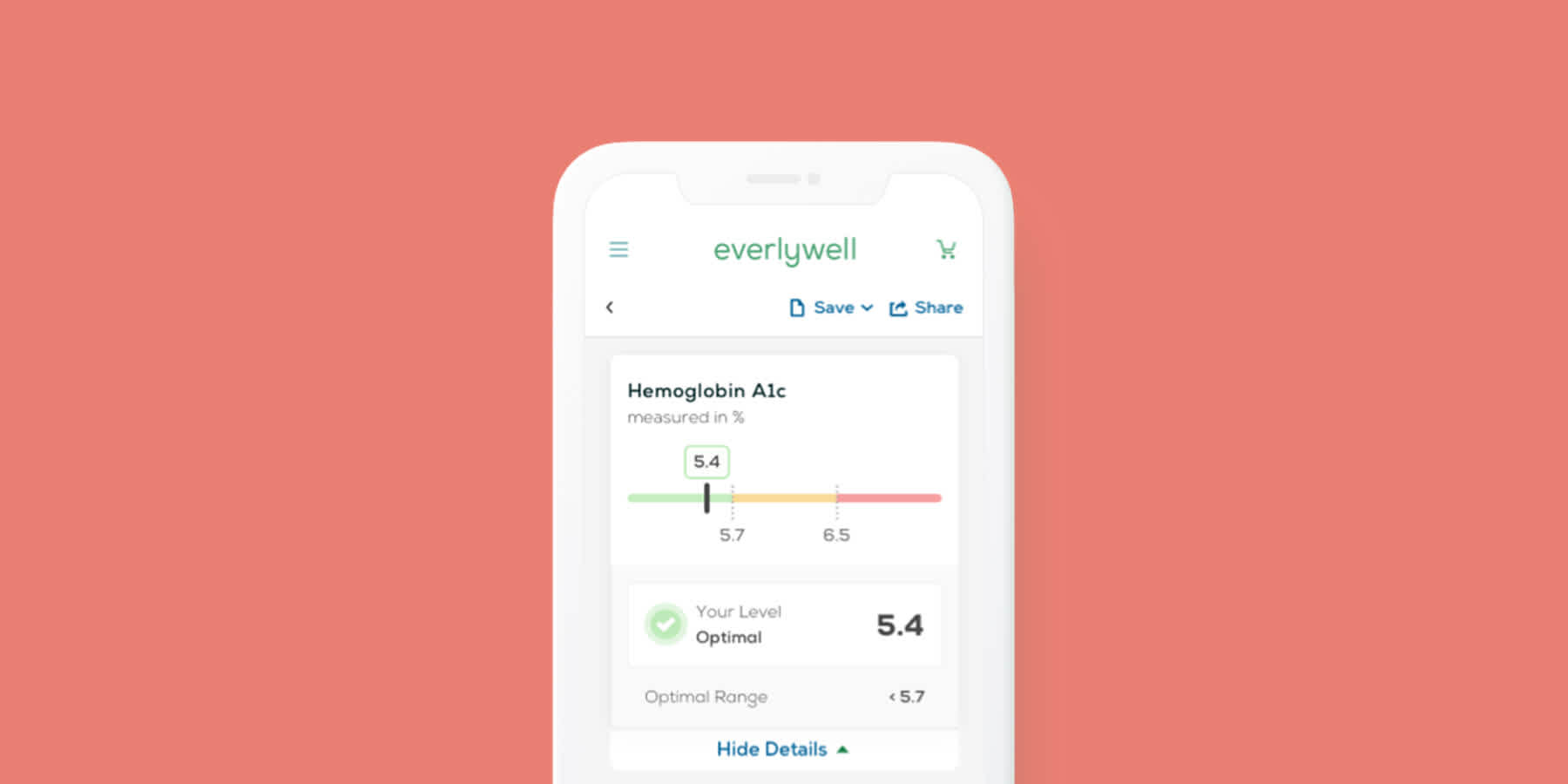
How Much Can I Lower My A1c in a Month?
Written on August 8, 2023 by Sendra Yang, PharmD, MBA. To give you technically accurate, evidence-based information, content published on the Everlywell blog is reviewed by credentialed professionals with expertise in medical and bioscience fields.
Table of contents
- Understanding the A1c
- Managing Your Glucose Levels
- Lowering Your A1c
- How Much Can You Lower Your A1c in a Month?
- Keep Your A1c on Target with Help from Everlywell
- Related Content
Have you heard of the A1c test? The A1c is the primary test used to manage diabetes.[1] Diabetes impacts about 37 million Americans in the United States.[2] You could be one of the millions of people across the nation that have diabetes or have just been diagnosed with the chronic condition. If that’s you, it is essential to understand the A1c, ways to manage your glucose level, and how much you can lower your A1c in a month.
Understanding A1c
The A1c is a blood test that measures your average blood glucose or sugar levels for a period of 3 months.[1,3] The test is also known as the hemoglobin A1c or HbA1c test. The glucose in your bloodstream attaches to a protein called hemoglobin in your red blood cells. The A1c test shows the percentage of red blood cells having hemoglobin coated with glucose. Higher glucose levels in the blood translate to more glucose-attached hemoglobin, leading to an increased A1c result.
The A1c test can be done in a lab with a traditional blood draw, a fingerstick in your doctor’s office, or an A1c at-home lab test.[3] You do not have to fast before taking the A1c, and it can be completed anytime during the day.[4]
When you get your A1c results back, what do the numbers mean? When using the A1c test for a diagnosis of diabetes, the levels are as follows[1,4]:
- Normal A1c level is below 5.7%
- Prediabetes A1c level is 5.7% to 6.4%
- Diabetes A1c level is 6.5% or greater
For a diagnosis of diabetes, you will typically receive a second test to confirm the result.[1,4] The A1c test is only used to diagnose type 2 diabetes.
Managing Your Glucose Levels
Keeping your glucose levels in your target range as often as possible can help prevent or delay severe chronic health conditions like heart disease, vision loss, and kidney issues.[1,5] To keep your glucose at healthy levels, your healthcare provider may recommend that you [5]:
- Increase physical activity and establish an exercise routine.
- Take your diabetes medication as indicated and prescribed by your healthcare provider.
- Stay on track with your diabetic meal plan. Discuss with your healthcare provider or a dietician if you are struggling with your diet.
- Remember to check your blood glucose regularly and ask your healthcare provider about when to get your A1c checked.
Lowering Your A1c
The target A1c goal for most diabetic adults is around 7% to 8%, but the range can vary slightly depending on age, other health conditions, medications, and other factors.[1,5] Speak with your healthcare provider to determine your individualized A1c goal. If you are struggling to lower your A1c, be sure to discuss it with your healthcare provider. Methods for lowering your A1c include [5]:
- Track your blood sugar levels to see what makes them go up or down
- Eat at a regularly scheduled time and don't skip meals
- Select food options lower in calories, trans or saturated fats, sugar, and salts
- Track your food intake and exercise routine
- Drink water and not juice or soda; limit alcohol
- Control your food portions based on the Centers for Disease Control and Prevention's recommended plate method
How Much Can You Lower Your A1c in a Month?
The A1c test is the average of your blood glucose levels for a period of three months.[1,3] If you’re wondering how much can you lower your A1c in a month, don’t anticipate immediate results. This is because red blood cells have a lifespan of about three months. After a few months of lifestyle changes, you’ll gradually be able to see your A1c go down. But you probably won’t see a lower A1c until after about three months of changes. Don’t be discouraged after a month.
Keep Your A1c on Target with Help from Everlywell
If you are struggling to maintain your target range A1c level, be sure to speak with your healthcare provider. Everlywell offers an at-home HbA1c test to measure and assess your A1c level from the comfort of your own home. Your test result will show your average blood glucose level for the past three months.
Related Content
What Can Cause False High Blood Sugar Readings?
What Happens When A1c Is Too High?
References
- ElSayed NA, Aleppo G, Aroda VR, et al. 6. Glycemic targets: Standards of care in Diabetes-2023. American Diabetes Association. URL. December 12, 2022. Accessed July 21, 2023.
- Diabetes quick facts. Centers for Disease Control and Prevention. URL. Last reviewed April 4, 2023. Accessed July 21, 2023.
- All about your A1C. Centers for Disease Control and Prevention. URL. Last reviewed September 30, 2022. Accessed July 21, 2023.
- The A1C test & diabetes. National Institute of Diabetes and Digestive and Kidney Diseases. URL. Accessed July 21, 2023.
- Manage blood sugar. Centers for Disease Control and Prevention. URL. Last reviewed September 30, 2022. Accessed July 21, 2023.
